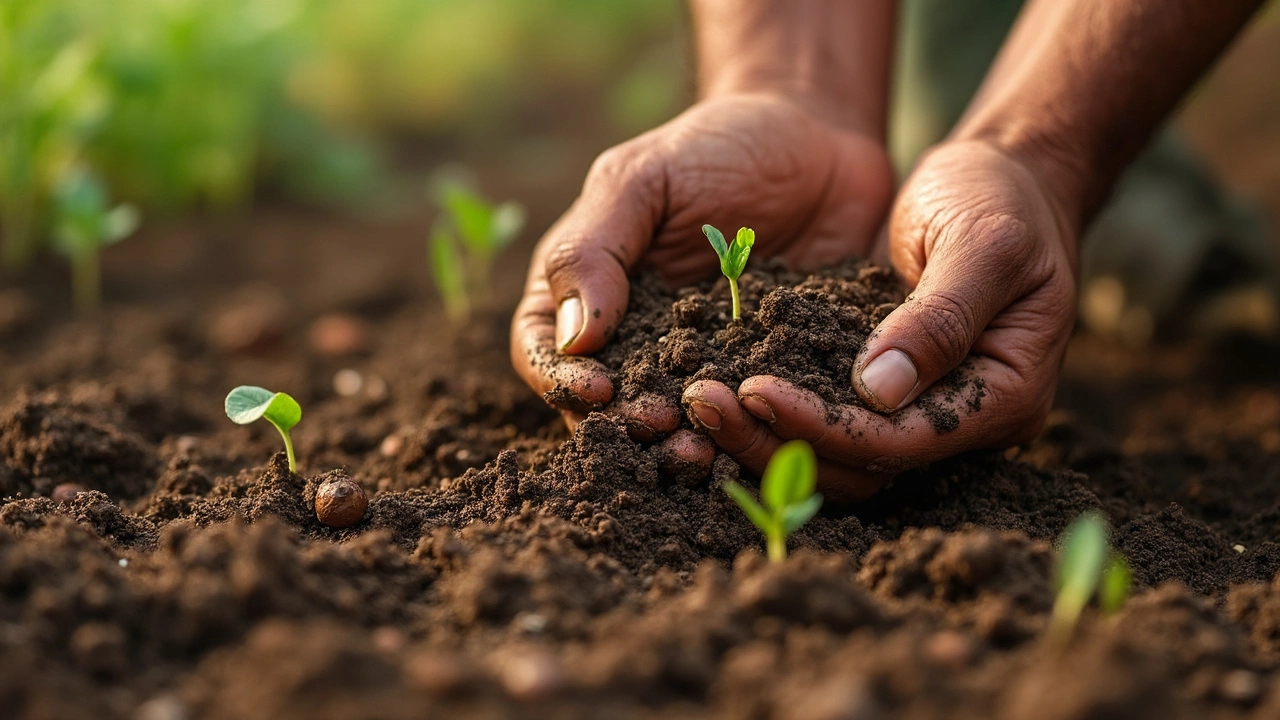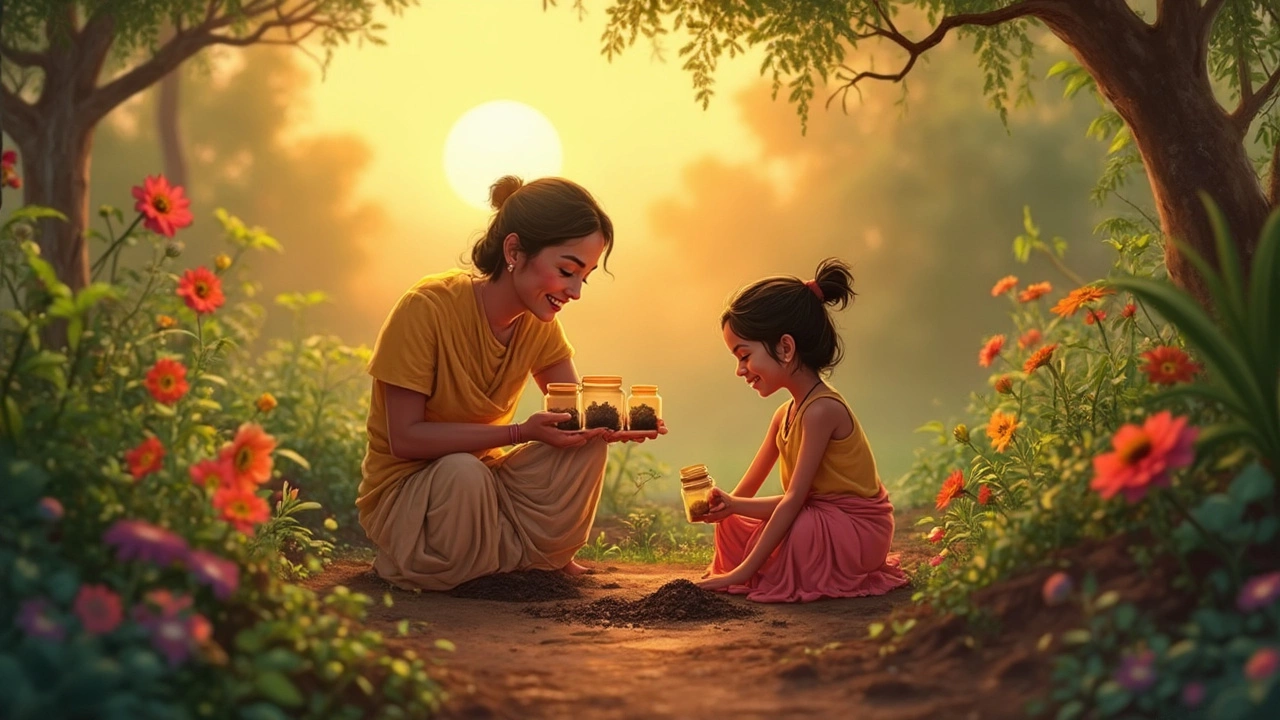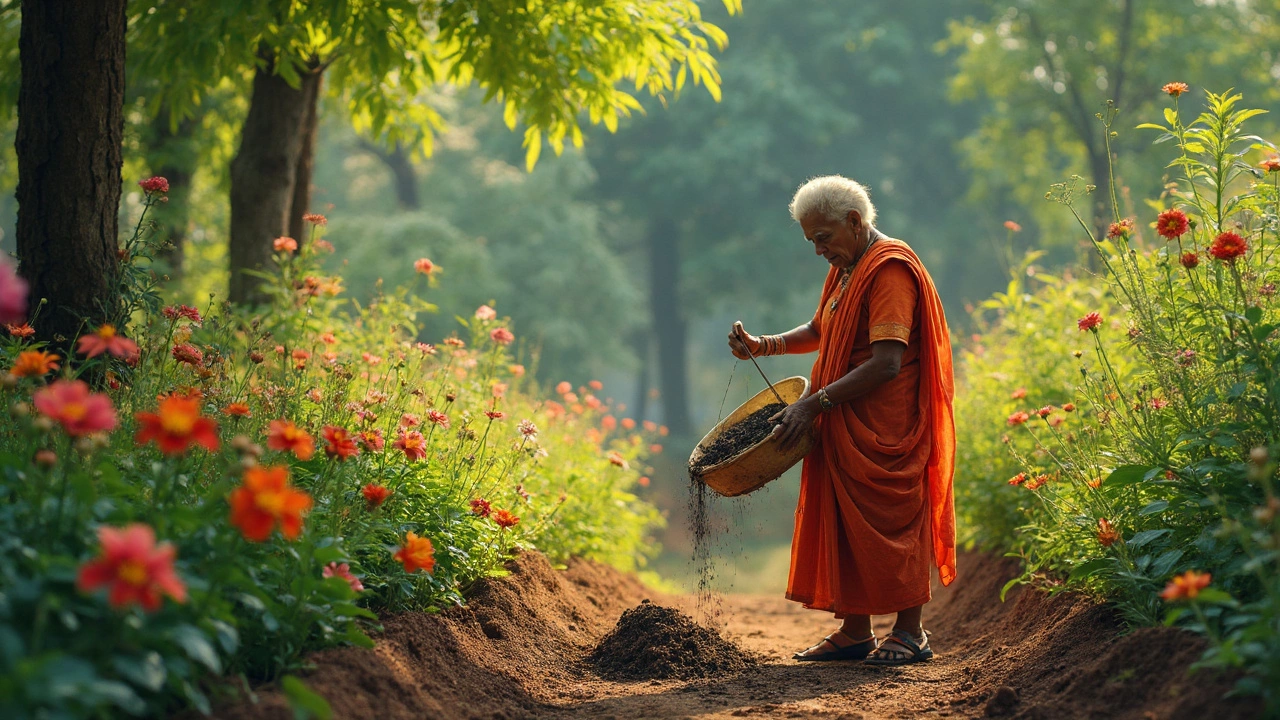Ever wondered why some gardens seem to burst with life, while others look like they're on a plant vacation? The secret often lies beneath your feet: it's all about the soil. Many gardeners underestimate the magic of good soil, but if you get it right, your plants will thrive like never before.
First things first, you need to know what you're working with. Grab a handful of your garden dirt and feel its texture. Is it sandy, clay-like, or just perfect loam? Knowing your soil type is the first step in understanding what it needs. Most plants prefer loamy soil—it’s like a comfy bed for their roots.
Once you've figured out your soil type, it's time to start bulking it up with organic matter. This doesn't mean throwing leftover pizza in your garden! Think leaves, grass clippings, and kitchen scraps. These goodies break down and enrich the soil, giving your plants the nutrients they crave.
- Understanding Your Soil
- Adding Organic Matter
- The Role of Composting
- Manure and Its Benefits
- Simple Testing Techniques
Understanding Your Soil
Before diving into soil improvement, you’ve got to understand what type of garden soil you’re starting with. A simple DIY test can tell you plenty about your soil’s texture. Here's a way to get started without fancy equipment:
Assessing Soil Texture
- Grab a handful of damp soil from your garden.
- Rub it between your fingers.
- If it feels gritty, you’ve got sandy soil. If it’s more sticky, that’s clay. Perfectly crumbly or spongy? Lucky you, that’s loamy soil!
Understanding this texture helps determine how well your soil retains water and nutrients.
Checking Soil pH
The pH level of your soil is another key factor. Most plants like a slightly acidic to neutral pH level (around 6-7). Here’s a simple way to check it:
- Pick up a soil pH test kit from any garden store.
- Follow the instructions and wait for the magic (or science) to happen!
If your soil is too acidic, adding lime can help. Too alkaline? Try sulfur to balance it out.
The Importance of Soil Structure
Soil structure is all about how soil particles stack together. Good structure allows roots to grow freely and access water and nutrients. Compacted soil is like a gym workout for plants trying to push through it, so keep an eye on that.
Why It Matters
Knowing your soil informs how you should approach soil improvement. Sandy soils might need more organic matter to hold moisture, while clay soils can benefit from better drainage solutions.
And about stats, here’s a glance at common soil types found in typical gardens:
| Soil Type | Water Retention | Drainage |
|---|---|---|
| Sandy | Low | High |
| Clay | High | Low |
| Loamy | Moderate | Good |
Getting to know your soil isn't just a nice idea—it's essential. With this knowledge, you'll make better choices for bulking up your soil and boosting those garden blooms.
Adding Organic Matter
So, you're serious about improving your garden soil? Adding organic matter is like giving your plants a nutritious meal. It's one of the simplest, yet most effective ways to enhance soil fertility and structure.
Why Organic Matter Matters
The soil is more than just dirt; it's a living ecosystem. When you add organic material, you feed the soil microorganisms that help break down nutrients, making them easily accessible to plants. This can lead to stronger roots and healthier plants overall.
What to Use
Here are some great organic materials to consider:
- Compost: This is black gold for gardeners. If you're not already composting, it's time to start. Use kitchen scraps, like vegetable peels and eggshells, mixed with yard waste.
- Grass Clippings: Spread them thinly and they'll break down quickly, providing key nutrients.
- Leaves: Shred them first to help them decompose faster. They're awesome for adding bulk to your soil.
- Wood Chips: These are great for pathways and mulching. As they break down, they enrich the soil.
How to Apply
When it comes to adding organic matter, consistency is key. Here’s a simple process to follow:
- Choose your organic material. Start with what you have available, like compost or grass clippings.
- Spread it evenly over your garden bed, keeping it about 2-3 inches thick.
- Mix it into the top 6 inches of soil using a garden fork or a tiller.
Don’t forget, you can also apply organic matter directly as a mulch layer. Just let it sit on top and break down naturally over time.
Time to See Results
Improving the soil doesn’t happen overnight, but if you make adding organic matter a part of your regular garden routine, you'll notice the benefits. Healthier, more productive plants and a more vibrant garden await!

The Role of Composting
When it comes to bulking up your garden soil, composting is honestly one of the best things you can do. It's like turning kitchen scraps and yard waste into plant fuel, not to mention it's super eco-friendly.
So what's the big deal with composting? Well, it's all about turning waste into 'black gold,' a term gardeners use to describe rich, well-decomposed compost. This wonderfully crumbly stuff is packed with nutrients, and it works magic in your garden by improving both the structure and fertility of your soil.
Getting Started with Composting
If you're new to this, don't worry. Starting a compost pile or bin is ridiculously easy. Basically, you want to mix 'green' materials like vegetable peels and 'brown' materials like dry leaves. Here's a quick step-by-step:
- Choose a spot for your compost pile or bin. Make sure it's accessible but out of direct sight—it can get messy.
- Add a layer of brown materials, like fallen leaves or small branches.
- Add a layer of green materials, such as fruit and veggie scraps or grass clippings.
- Alternate layers and keep the pile moist, but not soggy.
- Turn the pile with a pitchfork every few weeks to aerate it and speed up decomposition.
Benefits of Composting for Your Soil
There’s no denying the perks of adding compost to your garden. For starters, it improves the soil structure, which makes it easier for roots to take hold and breathes life into your garden space. Compost also improves earthworm activity, and if you ask any seasoned gardener, worms in the garden are a very good sign.
Compost releases nutrients slowly, so plants get a steady feed without the risk of burning, unlike some chemical fertilizers. Plus, it's an excellent way to recycle kitchen and garden waste, cutting down on what you send to the landfill.
Can't remember if your compost is ready? Here's a quick tip: when it's dark, crumbly, and smells a bit like forest earth, you know you've hit jackpot!
For those interested in numbers, a well-maintained 3 x 3 x 3 feet compost pile can take about three months to fully break down, making it an efficient addition to your regular gardening routine. And the benefits? They're myriad, making it clear why composting should be part of every gardener's toolkit.
Manure and Its Benefits
Thinking about giving your garden soil a nutrient boost? Enter manure, the oldest gardener’s trick in the book. It's like a natural superfood for your plants, packed with essential nutrients that help them grow big and strong.
The Nutrient Powerhouse
Manure is brimming with nitrogen, phosphorus, and potassium—basically the holy trinity of plant nutrition. These elements feed your plants and improve soil structure, which means better water retention and root growth. For instance, cow manure can sometimes contain up to 3% nitrogen, 2% phosphorus, and 1% potassium, making it a balanced addition to any garden.
Variety Matters
There's no one-size-fits-all manure. Cow, horse, chicken, and even rabbit droppings can do wonders for your soil, but each has its own strengths. Chicken manure is highly concentrated in nutrients and works great in smaller doses, while cow manure is more balanced and can be used in greater quantities.
| Type of Manure | Key Nutrients | Best Used for |
|---|---|---|
| Cow | Nitrogen, Phosphorus | General soil improvement |
| Chicken | High Nitrogen | Fast nutrient boost |
| Horse | Fiber, Nutrients | Composting base |
Composting Manure
Raw manure can be too strong and might burn delicate plants. To avoid this, compost it first. Pile it up, mix with straw or leaves, and let it sit for a few weeks to a couple of months. This process breaks down the potent stuff and creates rich, dark compost that's amazing for your garden.
Using Manure Wisely
A little goes a long way. Spread a thin layer over your soil and mix it in lightly. Overdoing it can sometimes lead to an overload of nutrients, which isn't good for your plants either. And always wash your hands after handling manure—keep it healthy for you and your garden!

Simple Testing Techniques
Getting your garden soil into shape doesn't always need fancy equipment or professional help. Sometimes, simple DIY tests can tell you a lot about what your soil needs to help your plants thrive.
Testing Soil pH
One of the most important things you can learn about your soil is its pH level. Here's a quick way to check it at home:
- Take a small soil sample from about six inches below the surface.
- Divide it into two different containers.
- Add half a cup of white vinegar to one container. If it fizzes, your soil is alkaline.
- To the other container, add half a cup of baking soda mixed with water. If this fizzles, your soil is acidic.
- No reaction at all? Congratulations, your soil is neutral!
The Jar Test
Want to get a deeper understanding of your soil's composition? The jar test can help:
- Collect a cup of soil from your garden and remove any rocks or debris.
- Fill a glass jar about a third full with soil, then fill it with water almost to the top.
- Shake it vigorously and leave it to settle overnight.
- You'll notice different layers forming. Sand will sink to the bottom, silt will form the middle layer, and clay will sit on top. This gives you a practical idea of how your soil is structured.
Why does this matter? Well, understanding these layers helps you know what kind of organic matter or amendments might be needed to bulk up your soil.
Moisture and Drainage Test
A simple way to test your soil's moisture and drainage is called the 'percolation test':
- Dig a hole about 12 inches deep.
- Fill it with water and let it drain completely.
- Fill it again, and note how long it takes to drain.
If the water takes more than four hours to drain, you might have clay-rich soil. Drainage is crucial for healthy plants, so if needed, consider adding organic matter or constructing raised beds to improve it.
These simple tests are great first steps to understanding your garden soil better. They don't take much time, and they'll give you valuable insights into what your plants need to grow stronger and healthier.

